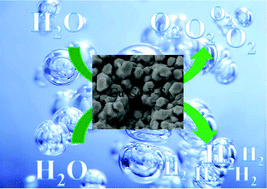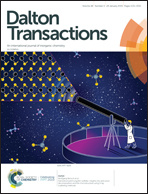Cu–Co–M arrays on Ni foam as monolithic structured catalysts for water splitting: effects of co-doped S-P†
Abstract
Finding new methods to design environmentally friendly, highly stable, and robust oxygen evolution reaction (OER) and hydrogen evolution reaction (HER) catalysts remains an extremely important challenge and affords several opportunities for exploiting the water-splitting process. In our work, Cu–Co–M (M = O, S, P, Se, S-P, and P-S) materials were grown in situ on three-dimensional (3D) porous nickel foam (NF) with good electrical conductivity by hydrothermal synthesis, vulcanization, selenylation, and phosphorization of the Cu–Co-precursor under an Ar atmosphere. Cu–Co–P-S/NF presents an overpotential value of 220 mV at 50 mA cm−2 for OER and that for Cu–Co–P-S/NF of 120 mV at 10 mA cm−2 for HER in an alkaline medium. In addition, considering the superior activities of Cu–Co–P-S/NF for OER and HER, the electrode pairing of Cu–Co–P-SOER//Cu–Co–P-SHER is designed for overall water splitting, and the experimental result shows that only a cell voltage of 1.55 V is needed to obtain a current density of 20 mA cm−2. According to the literature, this cell voltage is also among the lowest values that have been previously reported for electrocatalytic water splitting. Further, Cu–Co–P-S//Cu–Co–P-S exhibited efficient stability during a 20 h durability test without significant attenuation under alkaline conditions. By using XPS spectroscopy characterization, it was shown that Cu–Co–P-S presented the highest catalytic performance and long-term durability owing to the abundance of Co3+. The novelty of selecting the highest activity with the same catalyst for OER and HER from Cu–Co–M (M = O, S, P, Se, S-P, and P-S) in order to obtain a well-matched electrode pair, and therefore, simplifying the water-splitting device affords a wide range of possibilities for further exploitation of environmentally friendly and highly efficient electrode pairs.



 Please wait while we load your content...
Please wait while we load your content...